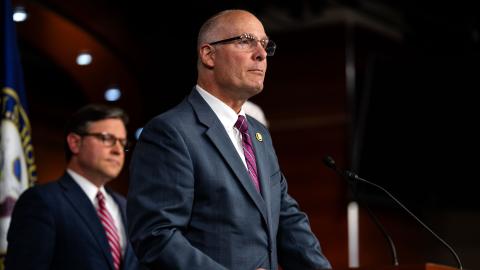Lost in the momentous events of the recent election was the news that the citizens of the District of Columbia overwhelmingly approved a "state constitution" for the proposed state of New Columbia. This presages a renewed public campaign for D.C. statehood. One can easily imagine how much the statehood proponents will enjoy bludgeoning Tea Party Republicans with a bat labeled "no taxation without representation", even if the chances for victory seem slim to none given Republican control of the Congress and the White House.
Thus this issue, which has been latent for some years, raises an interesting question: Can the Republicans shake off the opposition stance that has characterized so much of their behavior for the past eight years and actually rethink an issue, formulate a sensible proposal, and get out ahead of the curve? Or will the temptation to stonewall prevail?
An alternative plan for the District of Columbia could have the following components:
Shrink the congressionally-controlled "seat of government" (as provided for in Article I, section 8 of the Constitution) to a central core containing the White House and adjacent federal buildings, the Mall and its monuments and museums, the Federal Triangle, the Capitol and the House and Senate Office Buildings, the Supreme Court, the Library of Congress, and some of the contiguous federal buildings (e.g. the State Department, the U.S. Institute of Peace). The key point is that this area would contain no privately owned property and no residents (except for the President and his family, who vote in their home states.)
Return the remainder of the current District of Columbia to Maryland (just as Arlington County and Alexandria were "retroceded" to Virginia in the 1846). Until the next census and reapportionment of seats in the House of Representatives, Maryland would get an additional congressman, since it would be gaining about 675,000 new residents, roughly the population of the average congressional district.
Repeal the 23rd Amendment to the Constitution (which provided for D.C. participation in the Electoral College).
This arrangement would give the citizens of the current District the same representation in the federal government as citizens of the 50 states. Maryland would go from being a state that is slightly smaller than average, to a state that is slightly larger than average.
Therefore, citizens of the current District and the future Maryland could not reasonably complain of underrepresentation in the Senate. This plan clearly meets the demand that citizens in the District be treated the same as citizens elsewhere in the country. Maryland would, of course, have to figure out how its new territory should be organized: Since Washington is about the same size as Baltimore, the most obvious answer would be to give it a status identical to that of Baltimore, i.e., an independent city that is not part of any county.
Both this plan and the statehood plan meet the "no taxation without representation" criterion. Whatever the original reason for having the city containing the seat of government be totally under the control of Congress, it gets harder and harder to justify when the federal workforce (not to speak of the associated population of lobbyists and lawyers) is incomparably larger than the Founders could have imagined, and when most of it resides in the Maryland and Virginia suburbs in any case. So, defending the current status—however politically feasible for the next two years—seems like a losing proposition over the long run.
No one will be so naïve as to believe that this plan would be welcome with open arms by most of the advocates of statehood for the District, or, for that matter, by most Maryland political figures. But if the two plans were examined side-by-side (e.g., at a congressional hearing), it would become clear that what is at stake is politics rather than principle. If one assumes that for the foreseeable future (and we have just had a lesson in how short that future can be) the District and Maryland are reliably Democratic in presidential and senatorial elections, this plan deprives the Democrats of two electors (the District's three, minus the one additional Maryland elector) and kills any hope of gaining two senators. In return, the Democrats get an additional member of the House of Representatives, and a stronger hold on Maryland (which in its current configuration elects the occasional Republican governor).
Maryland would get a valuable addition to its tax base; given the ongoing rapid gentrification of many parts of the District, this benefit would only grow in coming years. In terms of Maryland politics, absorption of the population of Washington would further shift the center of power of Maryland politics from Baltimore City and County to the Washington metropolitan area, a trend that might be favored by some and disliked by others. (In any case, the Washington suburban counties of Montgomery and Prince George's already have a larger population than Baltimore City and County.)
District residents would be spared the cost of supporting the whole apparatus of a state government: Merging into Maryland would presumably generate savings in terms of basic governmental functions such as tax collection, DMV operations, etc. Political figures in the District would find themselves smaller fish in a bigger pond.
How these political factors would play out is anyone's guess, but it is hard to see why Republicans shouldn't prefer a debate between this plan and statehood to a debate between statehood and "taxation without representation."

















